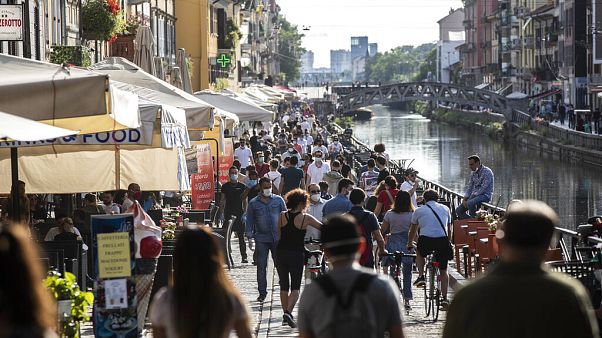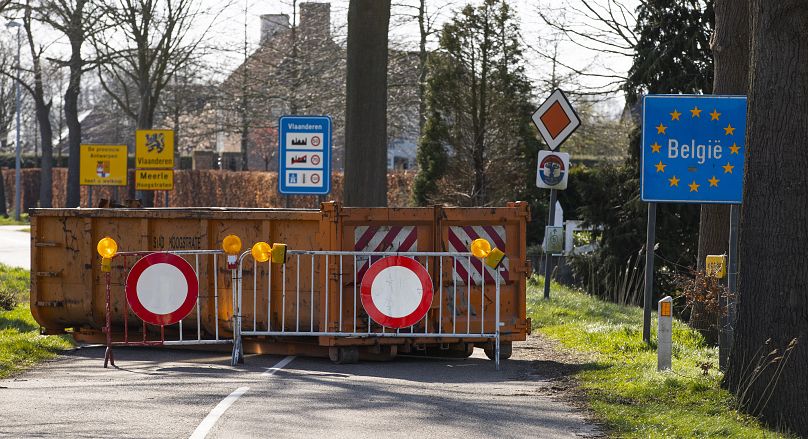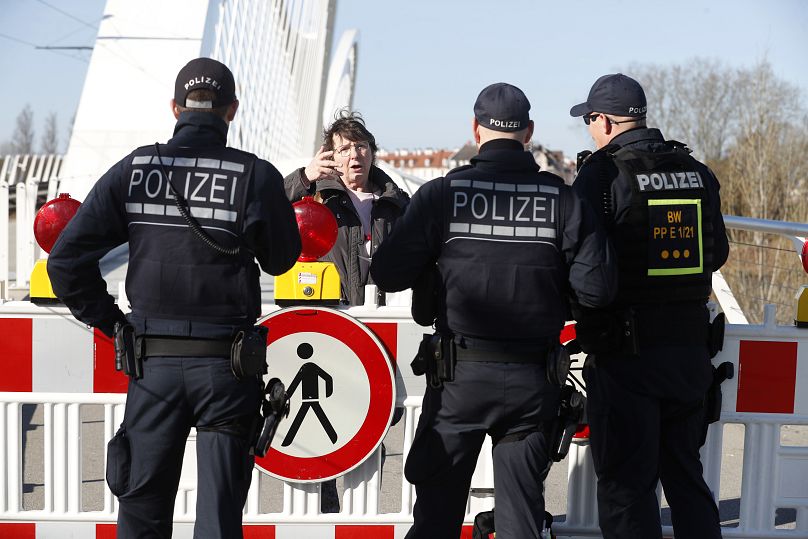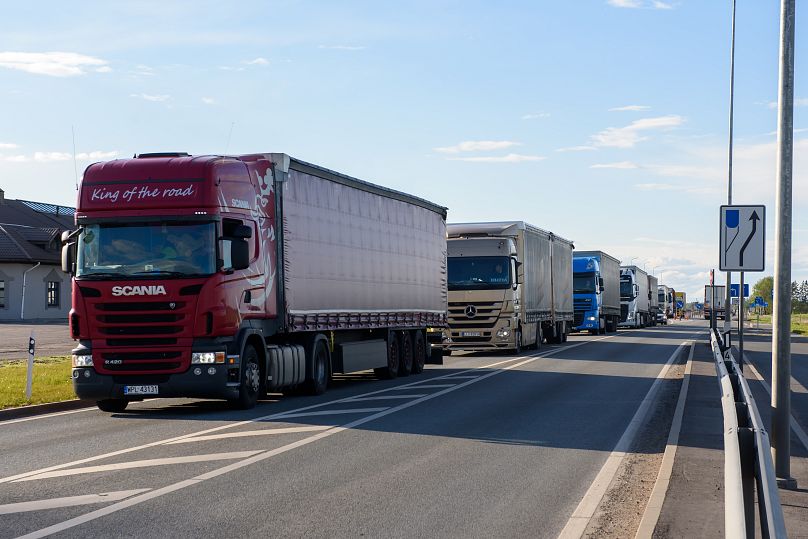Which European countries have opened their borders ahead of the summer holiday season?

Across Europe, governments have started to open their borders after weeks of closure during the coronavirus pandemic.With the summer holiday season fast approaching, people across Europe have started to wonder whether they will be able to get away this summer – and how far they will be able to go. The border situation remains a mixed picture across Europe, with each country imposing its own rules and its own timetable for re-opening.Given the pace of change, Euronews has compiled a handy guide to the situation in each European country.
AustriaAustria opened its land borders with Germany, Switzerland, Liechtenstein, Slovakia, Slovenia, Hungary and the Czech Republic on 4 June.The country will reopen its border with Italy from 16 June, but a travel warning will be issued for the region of Lombardy. There will be no restrictions with most European Union countries. People arriving in Austria “from any other country” however must produce a medical certificate proving a negative COVID-19 test. The certificate cannot be more than four days’ old.Entry by air is prohibited to citizens coming from countries outside the Schengen Area.BelgiumBelgium’s borders are closed and the country has banned non-essential travel abroad.The government has announced plans to reopen the border to citizens from the EU, the UK and the four other Schengen countries (Switzerland, Liechtenstein, Iceland and Norway) from June 15.The country eased its lockdown on June 8, however many restrictions, in particular for the hospitality and culture industries, remain in place until July 1.
Bosnia and HerzegovinaThe border is only currently open to citizens of neighbouring Croatia, Montenegro and Serbia – other foreign arrivals are not permitted.There are some exceptions, including freight drivers, residents and diplomats.BulgariaBulgaria opened borders on June 1 to EU, UK, San Marino, Andorra, Monaco, Vatican, Serbia and North Macedonia citizens, as well as to medical workers and family members of Bulgarian citizens, as listed on the government website.CroatiaCroatia will reopen its borders to all EU citizens, including from the UK, on June 15, with no obligation to quarantine.Croatia opened its borders in mid-May without restriction to nationals from the Czech Republic, Hungary, Austria, Estonia, Latvia, Lithuania, Poland, Slovenia, Germany and Slovakia.CyprusCyprus resumed tourist travel on June 9 after closing its borders for almost three months.The country will also cover health costs in case of coronavirus contamination occurring on the Mediterranean island.Citizens from Greece, Malta, Bulgaria, Norway, Austria, Finland, Slovenia, Hungary, Israel, Denmark, Germany, Slovakia and Lithuania, are currently allowed to visit as long as they have a health certificate proving they are virus-free. This document will have to be no older than three days.On June 20, passengers from Switzerland, Poland, Romania, Croatia, Estonia and the Czech Republic will be allowed in.The passengers from this group of countries will have to obtain health certificates while those from the first group will no longer have to.These lists exclude the country’s two main tourism markets, Britain and Russia.However, flights from Britain could restart in mid-July, and a few weeks later from Russia.Citizens of the US, France, Spain, and Italy remain excluded until further notice.Czech RepublicBorders with Austria and Germany reopened on June 5, 10 days earlier than expected. From May 27, the country opened its frontier with Slovakia and Hungary, but with restrictions.The other EU countries have been divided into coloured groups dependent on risk: green, orange, and red.From June 15, Czech residents and EU citizens from green countries — eastern and Baltic member states, Finland and Norway — will be able to travel to and from the country without any requirements.Those from the yellow group, which includes France, Italy, and Spain, must have a valid health certificate to enter.Test and quarantine conditions will apply for people entering from the UK and Sweden — the two red nations in Europe.DenmarkFrom June 15, tourists from Germany, Norway and Iceland are allowed to travel to Denmark but must show documentation of a valid hotel booking on their arrival.Citizens of other nations are still not permitted to enter Denmark, which imposed one of the earliest and strictest lockdowns in Europe.
EstoniaOpened borders to Baltic neighbours on May 15 and to the rest of the EU, the Schengen area, and the UK on June 1.”Travel documents and medical symptoms are checked” at points of entry, the Foreign Ministry has said.Those coming from countries with a high infection rate will have to self-isolate for two weeks.FinlandFinland plans to allow travellers from Norway, Denmark, Iceland, Estonia, Latvia and Lithuania from June 15 and recommends against unnecessary travel to other countries.
People travelling from these countries also will not need to quarantine.
Finland will continue to have border checks with Sweden though the “the aim is to enable unrestricted travel from Sweden to Finland as quickly as the disease situation allows,” Finland’s interior ministry said in a statement.Travel for work purposes is possible from EU countries as well as for residents or family purposes.
The interior ministry said borders with non-EU countries will remain closed until at least July 14.FranceTravellers from EU member states as well as Andorra, Iceland, Liechtenstein, Monaco, Norway, San Marino, Switzerland, and the Vatican will be allowed to visit the county from June 15 without a health certificate or any form of quarantine upon arrival.
But passengers from Spain and the UK will be required to self-isolate for 14 days, “in reciprocity” to current regulations in place in both countries, France’ Foreign Affairs Ministry has explained.
President Emmanuel Macron has also announced that international borders with countries outside the EU “where the epidemic has been controlled” will reopen on July 1.GermanyOn June 15, Germany will lift border restrictions for travellers coming from the EU, Switzerland, Norway, Iceland, Liechtenstein, and the United Kingdom.Germany, however, decided to extend until August 31 its warnings on travelling outside the EU.More information here.
GreeceThe Foreign Affairs Ministry published on Sunday, May 31, its plan for reopening borders, which entails three different phases.Phase 1 (present-June 15)Only a limited number of international flights are allowed to land in Athens.All arriving passengers must be tested and stay overnight at a designated hotel.In case of a negative test, passengers have to quarantine for 7 days.If the test is positive, they need to quarantine “under supervision” for 14 days.Phase 2 (June 15-June 30)From June 15, tourism travel resumes, and international flights will land not just in Athens but in Thessaloniki too.
However, some passengers will have to undergo mandatory testing upon arrival.Those coming from any of these airports listed by the European Aviation Safety Agency, will have to get tested on arrival, then go to to a designated hotel and quarantine for 7 days if the test is negative, and for 14 days if the test is positive.All other passengers, including all travellers coming from Albania, Australia, Austria, North Macedonia, Bulgaria, Germany, Denmark, Switzerland, Estonia, Japan, Israel, China, Croatia, Cyprus, Latvia, Lebanon, New Zealand, Lithuania, Malta, Montenegro, Norway, South Korea, Hungary, Romania, Serbia, Slovakia, Slovenia, Czech Republic and Finland – will be subject to random tests and no further restrictions.In addition, land arrivals from Albania, North Macedonia and Bulgaria will be allowed in the country.Those travellers will be subject to random tests upon arrival.
Phase 3 (July 1-onwards)International flights will be allowed into all airports in Greece and all travellers subject to random tests upon arrival.”Additional restrictions regarding certain countries will be announced at a later date”, the Foreign Ministry says.Arrivals by sea will also be allowed on July 1, with travellers subject to random testing.HungaryHungary opened its border with Austria, Slovakia, Croatia, the Czech Republic, Slovenia and Serbia on June 12 without the need for going into quarantine.IcelandIceland is set to reopen to EU and UK travellers on June 15.Tourists will be tested upon arrival. A few hours later, they will get the result on their phone, after downloading a tracking app.
The test, free for a period of two weeks, will cost 15,000 Icelandic Krona (€100) from July 1. Children born in or after 2005 will be exempt.Authorities are yet to clear procedures for those who test positive.IrelandThe Irish health authorities currently require anyone coming into Ireland, except from Northern Ireland, to self-isolate for 14 days, upon arrival, including Irish residents.Arrivals have to complete a passenger locator form, although exemptions are in place for providers of essential supply chain services such as hauliers, pilots and maritime staff.ItalyItaly opened its borders on June 3 to EU, UK, Schengen area, Andorra and Monaco citizens, following the nationwide lockdown which came into force on March 9.
Borders also opened with Vatican City and San Marino on this date.Travellers coming from the above countries don’t have to undergo quarantine unless they have been in any other country in the 14 days before reaching Italy.The government dismissed any possible attempt to apply different confinement rules in different regions as “unconstitutional” following spats between local governors.
Therefore, the same confinement rules will apply in the same way to all regions.The country entered lockdown “phase 2” on May 18, allowing restaurants, bars, hotels and cafe to reopen, however, restrictions could be restored at any time if the epidemiological situation worsens.Cruises on Italian ships are currently suspended.
LatviaOpened its borders to Baltic neighbours Estonia and Lithuania on May 15. Since June 1, there have been no border checks with Lithuania.
From June 3, residents of EU and EEA countries, as well as Switzerland, have also been able to enter the country without being submitted to a 14-day quarantine if the country they travelled from has a 14-day cumulative number of COVID-19 cases not exceeding 15 per 100,000 population.
LithuaniaLithuania has opened its borders to citizens from the following countries: France, Spain, the Netherlands, Poland, Romania, Denmark, Italy, Luxembourg, Finland, Germany, the Czech Republic, Estonia, Malta, Austria, Norway, Bulgaria, Latvia, Cyprus, Hungary, Switzerland, Iceland, Greece, Slovakia, Slovenia, Croatia, and Liechtenstein.Travellers from Ireland and Belgium have to self-isolate for 14 days, while citizens of the UK, Portugal and Sweden are banned.
LuxembourgLuxembourg’s border with Germany reopened on May 15 and travel has not been restricted with other European nations, although travel from outside Europe is banned.MaltaMalta’s Tourism Ministry announced on May 31, that it will reopen tourism travel on July 1.
Borders will reopen to travellers from Germany, Austria, Cyprus, Switzerland, the Italian islands of Sicily and Sardinia, Iceland, Slovakia, Norway, Denmark, Hungary, Finland, Ireland, Lithuania, Israel, Latvia, Estonia, Luxembourg and the Czech Republic.More countries “will be announced in due course, once clearance from the health authorities is received.”Malta was the first country in Europe to ban flights from Italy, Spain, France, Germany and Switzerland, on March 10.More information here.
MontenegroEntry to Montenegro is allowed without quarantine, so long as you are coming from a country with a rate of transmission less than 25 per 100,000 inhabitants.The Montenegro government is keeping an up to date list of countries where people are allowed to enter from.
Click here to see the list.The NetherlandsThe Dutch government is restricting non-essential travel from people from third countries until July 1, but EU citizens – including British nationals – can now enter the country.Like many other nations, there are strict requirements around shaking hands, maintaining social distancing and hand-washing.
NorwayNorway has closed its borders and only travellers for fellow Nordic countries — Denmark, Iceland, and Finland — will be able to return on June 15.Sweden was excluded from the measure.The government is to decide by July 20 whether travellers from other nearby countries can visit but the ministry of foreign affairs is, for now, advising against all non-essential international travel into the country until August 20.Norway currently has a 10-day quarantine for those returning from international travel.More information here.PolandBorders reopened for EU nationals on June 13 with no quarantine condition.
Restrictions on international flights from the bloc are to be lifted on June 16.PortugalWorkers and supplies are being allowed across Portugal’s land border with Spain, but it is closed to tourists until at least June 15.Border controls have been in place since March 16. There is currently no requirement for arrivals to go into quarantine, except in The Azores.
Eduardo Cabrita, Portugal’s minister for internal administration, said no decision had been made on when to lift the restrictions.RussiaOn June 8, Russia said it will partially reopen its borders as the country eases coronavirus restrictions.
Prime Minister Mikhail Mishustin said that travelling abroad for work, medical or studying purposes will be allowed, as well as for taking care of relatives.
He also said Russia will let in foreigners seeking medical treatment or taking care of family members.But Kremlin spokesman Dmitry Peskov told reporters there is “no set date” yet for resuming international flights, which were halted in late March.
RomaniaRomania’s borders are open to EU citizens but currently closed to those from outside Europe.SerbiaSerbia’s borders are open.SlovakiaSlovakia reopened its borders to Germany, Liechtenstein, Switzerland, Slovenia, Croatia, Bulgaria, Greece, Cyprus, Malta, Estonia, Latvia, Lithuania, Finland, Norway, Denmark and Iceland on June 10.
The country’s borders to Austria, Hungary and the Czech Republic were opened a few days earlier, on June 5.SloveniaSlovenia reopened borders to citizens coming from 17 countries on May 15, including neighbouring countries such as Austria, Croatia and Hungary.
Montenegro and Italy are added to this list from June 15. Anyone entering from a country with high levels of COVID-19 will have to quarantine for 14 day. Click here for the list of restricted countries.SpainSpain plans to open its border to Schengen area countries on June 22. Portugal is an exception to this, and the border with Portugal is set to reopen on July 1.
Currently, only Spanish citizens, residents of Spain (who must prove their habitual residence), cross-border workers, health or elderly care professionals and people who can prove force majeure or a situation of need, are allowed to enter the country via Spanish ports and airports.
The exceptions also include diplomatic personnel and everything related to the transport of goods in order to avoid shortages.Borders with France and Portugal have been closed since March 17, allowing access only to Spanish citizens, people residing in Spain, cross-border workers and those who can provide documentary proof of necessity. None of the regulations are applicable to Andorra or Gibraltar.
Currently, people who enter the national territory from abroad must stay in quarantine for 14 days after their arrival.SwedenSweden has introduced border restrictions but it only applies to non-essential travel from countries outside the EU/EEA, except the UK and Switzerland.
That restriction came into effect on March 19 and has been extended until June 15.More information here.SwitzerlandSwitzerland, who brought in border controls on March 13, will reopen borders to all EU countries, the UK, Norway, Iceland and Liechtenstein on June 15, instead of July 6 as previously planned.
Any foreign nationals who currently try to enter Switzerland without a valid residence or work permit will be refused entry.Air passengers from abroad are currently only able to enter the country through the airports at Zurich, Geneva and Basel.The Swiss authorities have not imposed any quarantine measures on persons entering the country. However, you must comply with the government’s hygiene and social distancing rules.More information here.
TurkeyTurkey has opened its border to foreign travellers, except for the land border with Iran. Arrivals may have to go through health checks.United KingdomBorders are currently open. Since June 8, visitors from abroad are required to quarantine for 14 days. Those exempt from these measures include people travelling from Ireland, the Channel Islands or the Isle of Man.As in other countries, certain professions are exempt from these rules, such as healthcare workers travelling to deliver healthcare in the country.
Upon arrival, those who are required to self-isolate need to provide their journey and contact details.The government says these measures will be reviewed every three weeks.More information here.




